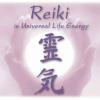OBJECTIVE::to evaluate the effectiveness of massage and reiki in the reduction of stress and anxiety in clients at the Institute for Integrated and Oriental Therapy in Sao Paulo (Brazil).
METHOD::clinical tests randomly done in parallel with an initial sample of 122 people divided into three groups: Massage + Rest (G1), Massage + Reiki (G2) and a Control group without intervention (G3). The Stress Systems list and the Trace State Anxiety Inventory were used to evaluate the groups at the start and after 8 sessions (1 month), during 2015.
RESULTS::there were statistical differences (p = 0.000) according to the ANOVA (Analysis of Variance) for the stress amongst the groups 2 and 3 (p = 0.014) with a 33% reductions and a Cohen of 0.78. In relation to anxiety-state, there was a reduction in the intervention groups compared with the control group (p<0.01) with a 21% reduction in group 2 (Cohen of 1.18) and a 16% reduction for group 1 (Cohen of 1.14).
CONCLUSION::Massage + Reiki produced better results amongst the groups and the conclusion is for further studies to be done with the use of a placebo group to evaluate the impact of the technique separate from other techniques. RBR-42c8wp.
OBJETIVO::avaliar a efetividade da Massagem e Reiki na redução de estresse e ansiedade em clientes do Instituto de Terapia Integrada e Oriental, em São Paulo (Brasil).
MÉTODO::ensaio clínico controlado randomizado paralelo com amostra inicial de 122 pessoas divididas em 3 grupos Massagem+Repouso (G1), Massagem+Reiki (G2) e Controle sem intervenção (G3). Foram avaliados pela Lista de Sintomas de Stress e pelo Inventário de Ansiedade Traço-Estado, no início e após 8 sessões(1 mês), durante o ano de 2015.
RESULTADOS::houve diferença estatística (p = 0,000) segundo ANOVA para o estresse entre os grupos 2 e 3 (33% de redução e Cohen de 0,98) e entre os grupos 1 e 3 (p = 0,014), 24% de redução e Cohen de 0,78. Para a ansiedade-estado, houve redução nos grupos de intervenção comparados ao grupo Controle (p<0,01), com 21% de redução para o Grupo 2 (Cohen de 1,18) e 16% de redução para o grupo 1 (Cohen de 1,14).
CONCLUSÃO::a Massagem+Reiki conseguiu melhores resultados entre os grupos e se sugere outro estudo com uso de placebo para o Reiki, para avaliar o alcance da técnica em separado. RBR-42c8wp.
OBJETIVO::evaluar la efectividad de Masaje y Reiki para reducción del estrés y ansiedad en clientes del Instituto de Terapia Integrada y Oriental, en Sao Paulo, Brasil.
MÉTODO::ensayo clínico controlado aleatorizado paralelo, con muestra inicial de 122 personas divididas en 3 grupos Masaje+Reposo (G1), Masaje+Reiki (G2) y Control sin intervención (G3). Los participantes fueron evaluados a través de la Lista de Síntomas de Stress y por el Inventario de Ansiedad Rasgo-Estado, enel inicio y después de 8 sesiones (1 mes), durante el año de 2015.
RESULTADOS::hubo diferencia estadística (p = 0,000) según ANOVA para el estrés entre los grupos 2 y 3 (33% de reducción y Cohen de 0,98) y entre los grupos 1 y 3 (p = 0,014), 24% de reducción y Cohen de 0,78. Para la ansiedad-estado, hubo reducción en los grupos de intervención comparados al grupo Control (p<0,01), con 21% de reducción para el Grupo 2 (Cohen de 1,18) y 16% de reducción para el grupo 1 (Cohen de 1,14).
CONCLUSIÓN::entre los grupos, el Masaje+Reiki consiguió mejores resultados; se sugiere realizar otro estudio con uso de placebo para el Reiki, para evaluar el alcance de la técnica de forma separada. RBR-42c8wp.
 Reiki is a Japanese technique for stress reduction and relaxation that also promotes healing. It is administered by "laying on hands" and is based on the idea that an unseen "life force energy" flows through us and is what causes us to be alive. If one's "life force energy" is low, then we are more likely to get sick or feel stress, and if it is high, we are more capable of being happy and healthy.
Reiki is a Japanese technique for stress reduction and relaxation that also promotes healing. It is administered by "laying on hands" and is based on the idea that an unseen "life force energy" flows through us and is what causes us to be alive. If one's "life force energy" is low, then we are more likely to get sick or feel stress, and if it is high, we are more capable of being happy and healthy.